With a low cost of living, picture-perfect white-sand beaches, friendly locals and fascinating culture, Southeast Asia are so much more than exotic vacation spots. Enticing expats and retirees from around the globe, they still beckon with the promise and rewards of an exciting life overseas.
Imagine never having to buy a new coat or pay for home heating ever again. Untouched by our idea of “winter”, each of the countries in Southeast Asia delivers warm, tropical weather and the chance for beach-side relaxation all year round. For many expats, it’s paradise found.
The good life can be almost unbelievably inexpensive. Here, the retiree lifestyle is all about exploring new places, playing golf and tennis, swimming, diving, surfing, and sailing—and never having to think twice about being able to afford to dine out.
Whether you’re contemplating overseas retirement or an extended adventure…each country comes up with the cost-of-living jackpot. Pick any one and you’ll be living a superior lifestyle—and for much less than you ever did at home.
Below are five of the best beach towns and cities in Southeast Asia where you could easily live on your social security.
1. Hua Hin, Thailand: A Favorite With Golfers
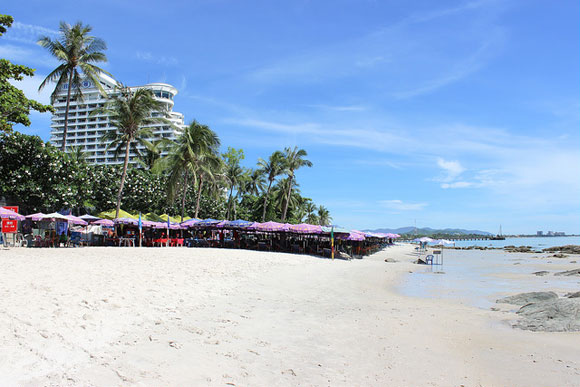
With a five-mile-long sandy beach lined with restaurants and shops, Hua Hin is a seaside city of around 50,000 people on the upper-western side of the Gulf of Thailand.
For much of its history, Hua Hin traditionally focused on domestic tourism rather than international trade. But that’s changing fast. Proximity to Bangkok…new, international-standard hotels…restaurants built on stilts in the sea that now cater to foreign, as well as Thai tastes. Hua Hin is becoming more high profile.
And it’s also a favorite with golfers. The city has nine golf courses, with green fees currently ranging from $60 to $100.
In the last few years, the number of international restaurants has grown exponentially—Italian and European being the most prevalent. There is also an entire string of shoreline restaurants where a couple of dishes and a beer shouldn’t set you back any more than $10. And prices at food stalls around the Night Market are almost as modest as anywhere else: most dishes will set you back less than $2.
Hua Hin is about a three-hour car journey from Bangkok. There are regular daily train services, with journeys taking about four hours. Flights from Bangkok take around 40 minutes. Many of the infrastructural improvements for access to Hua Hin, as well as within the city itself, were done by the government as a gift to the King of Thailand—the King permanently moved his summer palace there a few years ago to escape the pollution in Bangkok.
Since his move, Hua Hin has become the “in” place among upper class Thais. With the improved economy, greater numbers of them are taking long weekends and vacations in Hua Hin. At present, the expat numbers are relatively small, and limited to foreigners interested in adopting a quieter lifestyle.
“The main attraction here is the beach. People don’t come here to do stuff, they come here to relax,” said Robert Stanley, originally from Canada and owner of Bobby’s Bar & Restaurant, a popular expat gathering place at the south end of Hua Hin.
Hua Hin is not a foreign enclave; it is a Thai resort town. If all the expats left tomorrow, it would barely be noticed on a day-to-day basis. The whole town has a Thai style and the inexpensive prices reflect the large Thai influence. Less than 30% of the condos in the area are foreign-owned. But don’t get me wrong—there are a significant numbers of expats moving into this part of the country, but they are few and far between compared to other cities in Thailand like Chiang Mai or Pattaya.
Although not the most popular place to live, there are still rentals to be found in the city center. We looked at a small, two-bedroom older house for rent by the owner that was less than a five-minute walk to the beach for $450 per month. Close to the town center, a 570-square-foot, one-bedroom condo with direct access to Hua Hin Beach rents for $820 per month.
For beachside living, it is still a relatively inexpensive place to lead a comfortable lifestyle. Many of the expats I met were living on $2,000 a month or less. That was enough to provide them with a small house or condo and enough left over to enjoy the restaurants and bars around town on a regular basis. —Steve LePoidevin
2. George Town, Penang: City Living With a Big Village Feel
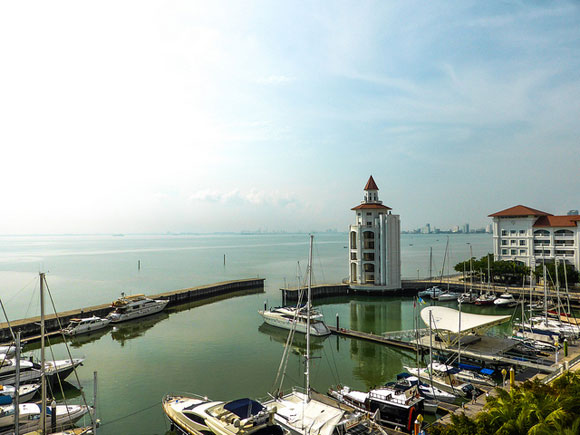
Many foreign retirees opt for a new life on Penang Island, a 50-minute flight from Kuala Lumpur, Malaysia’s capital. It’s also accessible by an eight-mile long road bridge and a ferry from the mainland that runs 24 hours a day. A second bridge was completed in mid-2014.
One of the oldest outposts of the former British Empire, Penang delivers 110 square miles of tropical treasures. A lush, mountainous island oozing history and heritage, Victorians christened it “the Pearl of the Orient”. It lies anchored on the Spice Route, just off Malaysia’s west coast, a two-hour drive from the borders of southern Thailand.
In the north east of the island is Penang’s best-known district George Town, the capital of the island. It’s where you’ll find most of the island’s hospitals, art galleries, museums, antique shops, café culture, and some of Malaysia’s oldest colonial administrative buildings. Penang International Airport is 40 minutes away.
You don’t need a car in George Town and your favorite cafés, restaurants, food markets, or convenience stores are all within walking distance. The expats who live here want city living with a big village feel, and that’s exactly what they get. At night there is little traffic, and getting to know your neighbor while sipping a gin and tonic on your balcony or in a local bar is a given.
What entices most people to this gorgeous island is the cost of living. A couple can easily live on $1,500 per month, including rent. A three-bedroom, two-bathroom apartment in a great location in George Town can be rented for $450 per month. Here you are close to everything from bars and restaurants to antique shops and art galleries. —Keith Hockton
3. Sihanoukville, Cambodia: Rent From $120 a Month
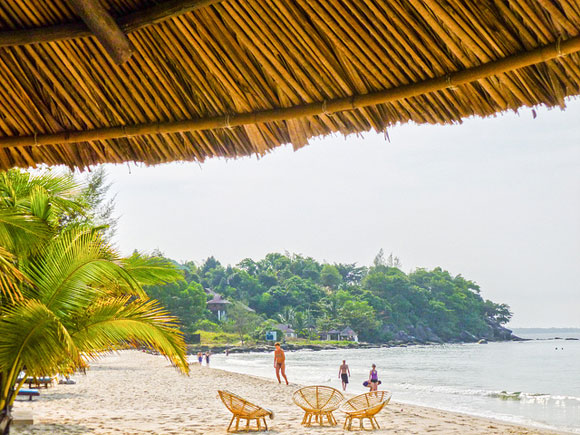
Sihanoukville is a relatively small tourist city, with a population of less than 90,000 people. But due to its stretches of popular beaches and clusters of undeveloped islands, it is Cambodia’s most popular coastal resort.
After Siem Reap and Phnom Penh, it is Sihanoukville where foreign tourists and expats, as well as Cambodians, come to relax and enjoy the ocean breeze.
This is a city that attracts all kinds of tourists but luckily there are enough beaches to go around with each of Sihanoukville’s different beaches drawing their own crowds.
Backpackers tend to head to Serendipity Beach where there are 24-hour beach bars, cheap guesthouses and an all-round party atmosphere.
Cambodians flock en-masse to Ochheuteal Beach during local public holidays like Khmer New Year. They enjoy picnics of squid and crabs in large groups before going swimming fully clothed (swimming costumes have yet to fully catch on here).
For many local expats and those who like to visit Sihanoukville for long weekends, Otres Beach is the best option for relaxation and a relaxed environment. Located about 10 minutes from Ochheuteal Beach, it is quite remote and you have to pass the Queen’s Hill rocky outcrop before you reach the pristine white sand of Otres Beach.
By far the most unaffected by development, Otres is the beach that expats in the know go to when they want to kick back with a beer at one of the beachside stalls or go for swim in the crystal clear water.
Between 2,500 to 5,000 expats live in Sihanoukville on a full time basis, with that number increasing during high season.
And those expats are living the high life here on a low budget. “The cost of living here is so low that my bills only total around $1,200 a month, without having to budget,” says expat Brett Dvoretz.
“I can easily afford to indulge myself whenever I want,” says expat Rob Schneider. “Between breakfast, renting a catamaran, and dinner for two, I came away with change out of the $25 I had in my pocket this morning. What would I have back home? The best I can imagine is a small apartment far from the beach and a nine-to-five job or—now that I’m in my late 60s—a pension that would barely cover my basic expenses.”
“It’s hard to complain when you can rent an air-conditioned, one-bedroom apartment for $250 a month, or a Western-style, furnished studio apartment with a fan for as little as $120 a month,” Rob says. “After you’ve been here a little while, you’ll be able to find even better deals through your new local and expat friends.”—Steven King
4. Da Nang, Vietnam: The Easiest Place to Make New Friends
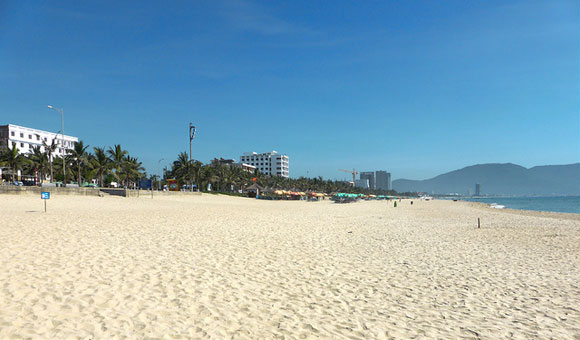
Da Nang is the largest city along Vietnam’s central coast and it’s also Vietnam’s most progressive city. It is a modern and dynamic destination that has set its sights on becoming the “Singapore of Vietnam.” The growing skyline includes a new city administration building that bears close resemblance to London’s futuristic bullet building, and the entire downtown has a decidedly cosmopolitan flair.
Surprisingly, given its population of about a million, there is little hustle and bustle in Da Nang. There are, however, lovely parks, riverside promenades, and a long, uncrowded, powdery sand beach. Da Nang residents are relaxed and social. It might be the easiest place to meet people and make new friends in all of Vietnam. It is considered one of the least corrupt cities in Vietnam, and city planning has insured that growth will not come at the expense of quality of life.
Da Nang’s expat community has flourished in the past few years. It used to be that most of the town’s expatriates were either English teachers or employed at one of the local information technology companies. Now, a sizeable influx of retirees are coming here to settle down, too.
Many people have settled in Da Nang because of the beach, which is certainly one of the prettiest in Vietnam. In 2013, Forbes Magazine voted it as one of the world’s six most attractive beaches.
“My favorite activity during the warm months is going to the beach in the late afternoon,” says Californian Mel Potter of his new home. “If you want to get away from the rat race and be near the beach, with a decent nightlife, this is the place for you. You can have the lifestyle you want here, even live like a millionaire if you want.”
Expats here can easily live on their Social Security. Mel rents a two-bedroom house for $300 a month. That includes air conditioning and all utilities—water, cable, internet, electric, everything.
“My monthly budget, for everything, is about $500 to $600,” says Mel. “I eat about half my meals at home and half the time I eat out. If I want to go out for a good American meal, I have several choices. I also like to eat the local foods.”—Wendy Justice
5. Dumaguete, Philippines: A Seriously Affordable Cost of Living
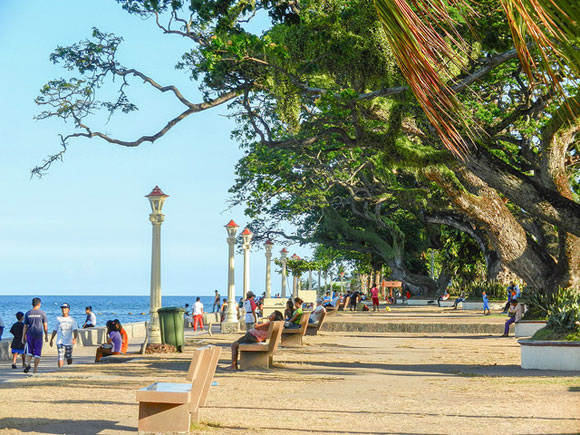
The sea-side town of Dumaguete is home to around 4,500 expats. It’s famed for its energy and vibrance, thanks to seven universities and colleges. You’ll find the first private U.S. university in Asia here—Silliman University. This in turn houses the best private hospital in town, where for $56 a night you can get a private room, if need be.
And that’s perhaps the biggest draw for expats…a seriously affordable cost of living. You can eat out for less than $5 and rent for under $350 a month.
The province of Negros Oriental, on the island of Negros, is right in the heart of the Philippines. It’s the third-largest island, and you’ll find Dumaguete in its southwest corner.
This has always been a tropical island; summer highs average around 91 F, and even in winter temperatures rarely fall below 73 F.
It seems as though no matter where you are in the Philippines, the people are always delightful. So when I heard that Dumaguete was called “the City of Gentle People,” I wasn’t at all surprised. From the moment my husband and I stepped off the plane, we were welcomed with smiles.
The airport is only about 15 minutes from the downtown. There is no need for a car or scooter; it’s an easy town to explore by foot. The real hub of downtown is only about eight blocks long by five blocks wide, so if you can take the afternoon heat, walking is the best way to see it all. If not, just hail a tricycle, or scooter with a sidecar, to take you around for a nominal fee—you can negotiate, but it never costs more than a few dollars.
At the heart of town is Rizal Boulevard, with its wide, waterfront promenade and beautiful old trees arching toward the ocean. The old, white lampposts light it up at night, perfect for a stroll along the water or to just sit and watch the boats come in. As you saunter down the boulevard, you feel transported to an old colonial town that could be anywhere is Spain, but not typically in the Philippines. It is perfect for a picnic, and that’s what many of the locals and expats do; they just laze about and enjoy life’s simple pleasures. It’s the kind of place where you mosey, you meander, but you don’t hurry. There is just no need.
Many expats meet in the restaurants and bars along the boulevard. It’s the best place to take advantage of the cool ocean breezes. This is where you’ll find some of the town’s best restaurants for local and international food.
Life in Dumaguete for an expat can be pretty budget-friendly. You can easily rent a three-bedroom, two-bathroom condo in the heart of town for as little as $100 to $350 a month, although the quality and furnishings may vary. A cleaning lady is $3 to $4 a day, and a gardener for that nice beach house will only be about $4 to $5 a day.
“I wanted to try an early retirement, and the lower cost of living here allows me to enjoy the laidback lifestyle you dream about when you are so busy back home with a career,” says Dave Christopherson who moved to Dumaguete with his family.
Dave’s slower-paced life these days revolves around golfing, snorkeling, spending time with his family, and socializing with both locals and expats from around the world. There is no shortage of crystal-clear water and beautiful beaches nearby, and Dave and his family take full advantage of that.
Dave, his wife April, and their son Davey live in a one-bedroom condo right in the middle of town for $350. He and his family live a very comfortable life on their $1,500-a-month budget. “Some expats do it on less, but I like to golf, travel some, and eat out a lot,” says Dave.-Kirsten Raccuia

Get Your Free Report on the World’s Best Places to Retire:
Learn more about the best places in the world to retire in our daily postcard e-letter.
Simply enter your email address below to sign up for our free daily postcards and we’ll also send you a FREE report on The World’s Top 10 Retirement Havens, plus access to over 10 more free reports. Our gift to you, on our favorite destinations.
Related Articles
The World’s Best Places to Retire
The Cheapest Places in the World to Live
5 Countries with the Best Healthcare in the World
Upcoming Conferences
The Only 2024 Fast Track Panama Conference
If your dream retirement involves stunning beaches… lush green mountains… a warm climate with no hurricanes… first-rate healthcare… incredible value for money (a couple can live well on $2,200 a month)… and the World’s #1 Retiree Discount Program…
Join our Panama experts and expats in February and discover why Panama could be your perfect paradise.

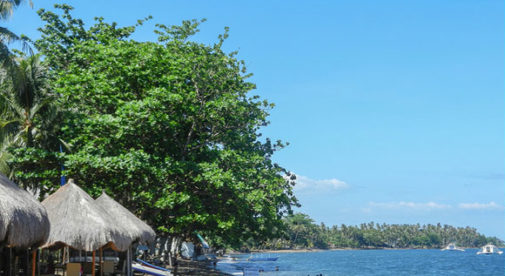
.png)